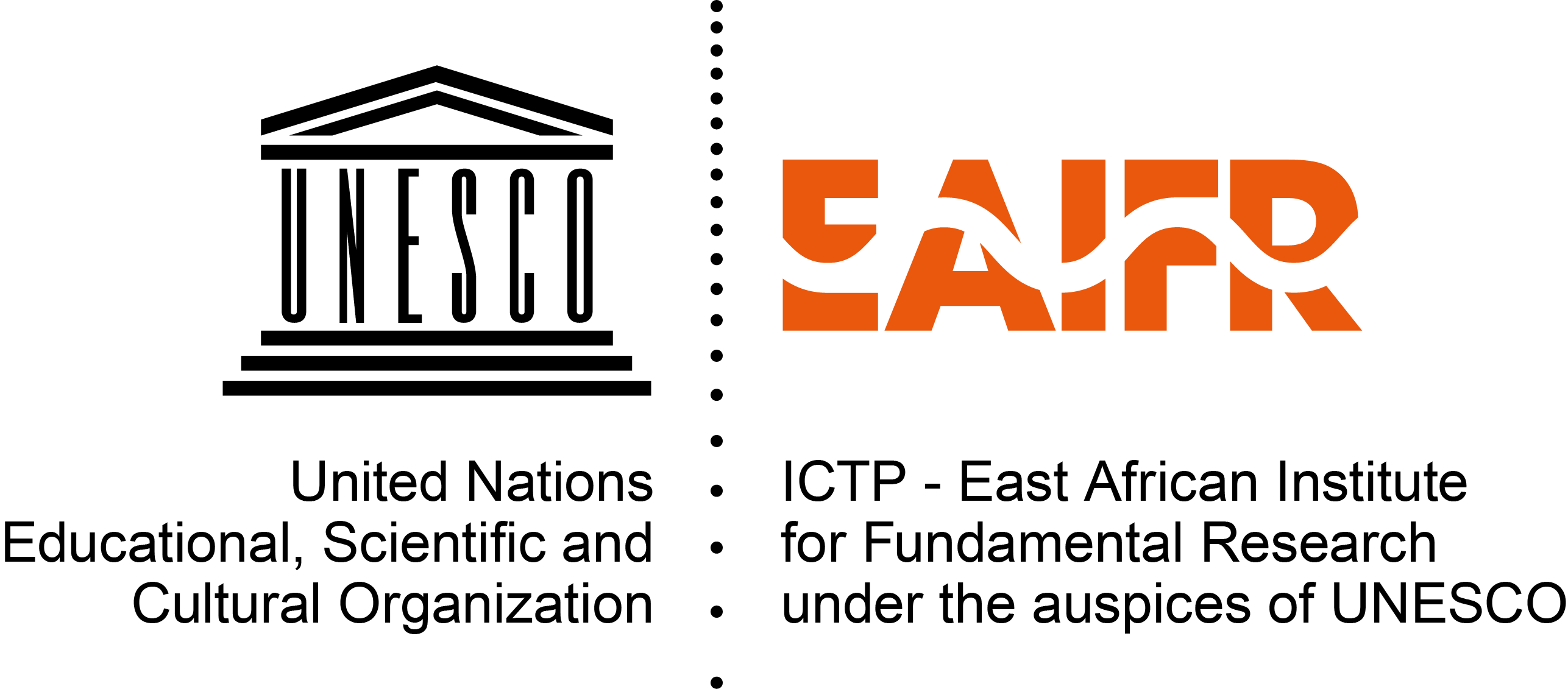ICTP-East African Institute for Fundamental Research
KIST2 Building CST
Nyarugenge Campus
University of Rwanda
Kigali, Rwanda
GEO@EAIFR Webinar Series 2023
Prof. Dr. Wouter Schellart from the Department of Earth Sciences , Vrije Universiteit Amsterdam, The Netherlands will discuss the control of subduction zone size on subduction dynamics and overriding plate deformation

The East African Institute for Fundamental Research (EAIFR) and the International Centre for Theoretical Physics (ICTP) wish to inform those who may be interested of a GEO@EAIFR webinar. This seminar will take place on March 16, 2023 and will be broadcast live on ZOOM. It will also be recorded and later posted on the ICTP-EAIFR YouTube channel, where one can find the previous recorded GEO@EAIFR webinars. Below all the details:
Speaker: Prof. Dr. Wouter Schellart, Department of Earth Sciences, Vrije Universiteit Amsterdam, The Netherlands.
Title: Control of subduction zone size on subduction dynamics and overriding plate deformation.
When: March 16, 2023 at 16:30 (Kigali time).
Register in advance for this meeting by clicking here.
All are very welcome.
Biography:
Wouter Schellart is a Professor of Geodynamics and Tectonics at the Free University Amsterdam. He studied physics at the University of Amsterdam and geology at the Free University Amsterdam, after which he moved to Australia in 1999 to start a PhD in Geodynamics at Monash University in Melbourne. Following several research fellowships at the Australian National University and Monash University, he returned to the Free University Amsterdam in 2016. Wouter's research focuses on deformation and flow in the Earth from the crustal scale to the whole mantle scale, investigating the driving forces and resistive forces related to such deformation and flow. He uses laboratory-based (analogue) and numerical modelling techniques as well as tectonic reconstructions and global statistical analyses to quantify the deformation, velocities, forces and stresses associated with large-scale geodynamic processes, in particular subduction and mountain building. His scientific endeavours involve both generic, process-oriented, research and research applied to specific geological settings and geographical locations (e.g. Andes, Southwest Pacific, Himalaya-East Asia, Mediterranean, Scotia Sea, Northwest Pacific).
Abstract:
Subduction zones on Earth show a large variability in subducting plate velocity and trench velocity, both between and along individual subduction zones. Furthermore, overriding plates bordering subduction zones show variability in overriding plate deformation rate and style. In many cases, the overriding plate is extended, resulting in the formation of a basin (e.g. East Scotia Sea, North Fiji Basin), while in some other cases it is shortened, resulting in a massive mountain range (e.g. Andes). It remains unclear what might cause the global variability in subduction kinematics and why some overriding plates shorten, others extend, and yet others remain relatively undeformed. In this presentation, buoyancy-driven numerical geodynamic simulations of subduction are presented that evolve over time in three-dimensional space. These models have been specifically designed to investigate the role of time and subduction zone size (trench-parallel extent) on subduction zone evolution, dynamics and overriding plate deformation. The numerical models demonstrate that shortening, compressive stresses, and mountain building only occur at very large subduction zones (large lateral extent) that have been active for a long time. The models further show that extension occurs more frequently, both for small and intermediate size subduction zones throughout their evolution, and for large subduction zones in the early stages of their evolution, most notably near their lateral slab edges. The model results are compared with global datasets of active subduction zones, providing an explanation for the present-day deformation style at these subduction zones and showing that the model results are consistent with a number of subduction zone characteristics such as their geometry and kinematics. In particular, the comparison between models and global datasets provides an explanation for the observation that on Earth, at present, overriding plate extension occurs more frequently than shortening.



